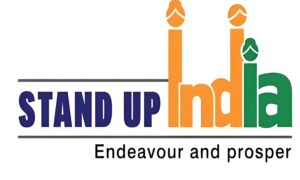CoSchedule serves more than 45,000+ marketers worldwide with its set of agile marketing products. The marketing software provider has also been featured in Gartner’s Magic Quadrant for content marketing platforms.
Ben Sailer is a part of CoSchedule’s overall marketing team divided into inbound, product marketing, marketing design, and marketing automation. He manages the company’s freelance writers’ network and formulates and directs the content strategy.
Inbound marketing vs. content marketing
According to Ben, inbound marketing is any marketing that focuses on pulling an audience in a non-interruptive way. This also includes content marketing.
However, inbound marketing could also include content-based methods like email, social media, etc., and non-content-based methods like pay per click. Since all marketing is about content today, terms inbound and content marketing are used quite interchangeably.
“Outbound marketing is about disrupting the experience of the audience by cold calling, cold emailing, etc. Inbound is doing everything else. It is a much larger umbrella of marketing done in a non-disruptive way, and content is a part of this strategy,” explains Ben.
At CoSchedule, he explains, the marketing team works in unison when a task is to be completed. “If you have the knowledge and skill, you just work on it without worrying about whether it is inbound or content,” he says.
Watch the video here:
What should marketers and creators focus on
For Ben, the most important thing is to understand where one’s content fits in the bigger picture. Nothing should work in isolation. Content teams should not exist in a silo creating content without tying it to the overarching content and business strategy.
“Start with understanding what do you want your content to achieve for your business. Many times, marketers create awesome content, but it doesn’t produce results. Mostly, the issue is that this content is not driven by an actual inbound strategy,” he explains.
Tips on optimising lead conversion rate from a blog
CoSchedule’s B2B blog is quite well-known. Taking tips from it, Ben says that their blog content strategy is very SEO-driven. Their traditional approach is:
- Getting traffic through organic search
- Converting that traffic into email subscribers through simple opt-in forms
- Providing users content with real value or a resource like templates, guides, or ebooks that help them better understand or better execute something.
“We do a lot of testing with pop-ups, CTAs, and use tools like VWO and Hotjar to better understand how people navigate around the blog and convert. It helps validate or invalidate our strategies and move toward the numbers we want to achieve. Test as much as you can and as quickly as you can. Don’t let your personal likings affect your decision; let data guide your decision-making,” Ben explains.
Focus on B2B podcasts for inbound traffic
Podcast as a medium is exploding in popularity for years now. Its main advantage over other content formats is that it helps grab the lister’s attention for a full 30 to 40 minutes, explains Ben considering the CoSchedule’s Actional Marketing podcast that has been doing quite well.
“During a podcast, even if the audience is doing something else, they are still actively listening to you. And that is really powerful! It gives you a chance to become a part of their life,” he says.
For CoSchedule, podcasts are all about networking and connecting to people in the same stream. The idea is to grab attention and influence people and not really drive sales directly.
Some tips to keep in mind if you plan to start a B2B podcast include:
- Define what you want to get out of it, like more subscribers or
- Pay attention to downloads, or how much people are listening to an episode
- You can also advertise your own products on the podcast by driving the correlation between uptake and demos or trials
- Upload them on blogs to drive link clicks
Future of inbound marketing
For companies that have already established themselves like CoSchedule that has strong domain authority, the future is about exploring different formats like videos, podcasts and getting more sophisticated with email automation.
For those that are just starting, Ben says the online space is much less forgiving. “Organic social is also very hard, and algorithms now are much less friendly. But inbound marketing is changing, and the focus is now on building communities and groups like the case was before the digital disruption. The future of inbound is going in all kinds of directions where it does not have to depend on any algorithm or a big tech company’s platform to feed you traffic. Most places are very crowded, and thus we can expect a lot of innovation that tries to get around this crowd.”










